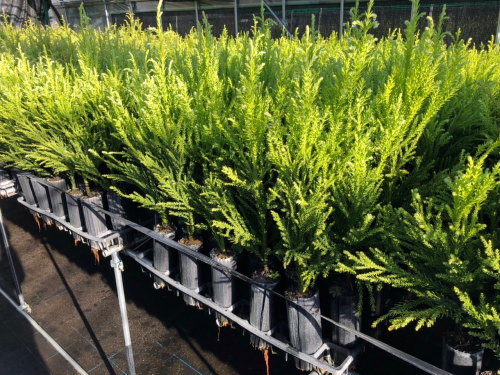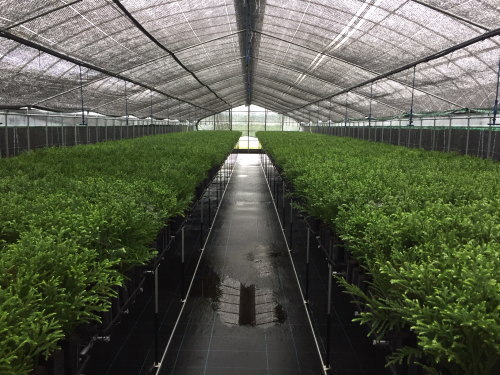Toyota Tsusho Commences Shipping of 250,000 Cedar Container Saplings and Promotes the Circular Use of Forest Resources
- (former)Machinery, Energy & Project
2021-11-25
In collaboration with Miyakonojo Forest Owners Association in Miyazaki Prefecture, Toyota Tsusho Corporation (hereinafter: Toyota Tsusho) will start shipping cedar container saplings*1 grown from cuttings used for reforestation*2 in October 2021 to promote the circular use of forest resources.
In forestry, it is important to promote the circular usage of forest resources through "growing", "using", and "planting". However, due to reasons such as the decrease in forestry workers caused by a lack of successors to forest owners and aging workers, the burden of forestation costs, and the lack of saplings, the issue is that the reforestation rate in Japan remains at around 30%*3.
As a business creation project under "Toyotsu Inno-Ventures Project"*4, Toyota Tsusho has been working on the sapling production business since 2019 in collaboration with Miyakonojo Forest Owners Association in Miyazaki Prefecture with the aim of solving the sapling shortage. After that, over the course of about a year, we built a system to stably produce high-quality cedar container saplings (among the high-growth obi cedar varieties with less pollen) while reducing the burden and cost on producers by improving the production process and eliminating waste. Then, in October 2021, we have started shipping cedar container saplings that meet the standards of Miyazaki Prefecture. While many small-scale businesses produce tens of thousands of saplings in Japan annually, Toyota Tsusho plans to ship 250,000 saplings annually.
In the future, by continuing to work on the production and supply of saplings and the promotion of the circular use of forest resources, the Toyota Tsusho Group will contribute to sustainable environmental conservation and the transition to a carbon-neutral society.


*1 Container sapling
Saplings that are grown in a special container with soil. Normal saplings grown in nurseries expose bare roots because the soil falls off when they are transported to the afforestation site, whereas container saplings have the advantage of having good rooting because they are transported to afforestation sites with the soil still attached.
*2 Reforestation
To create an artificial forest by replanting seedlings on the site where the artificial forest was cut down.
Note: Afforestation is the creation of a forest by modifying an existing forest. Alternatively, it is to create a new forest on land that originally had no trees.
*3 Source
Forestry Agency “Existing Forests and Implementation Status of the Forestry Basic Plan”
*4 Toyotsu Inno-Ventures Project (TIVP)
A group-wide project launched in 2018 with the mission of discovering and brushing up new business seeds and bringing about the creation of new businesses.
The information in this release is current as of the date of announcement.
Please note that information may change after the date of announcement. Thank you in advance for your understanding.



